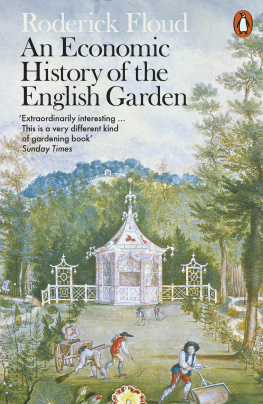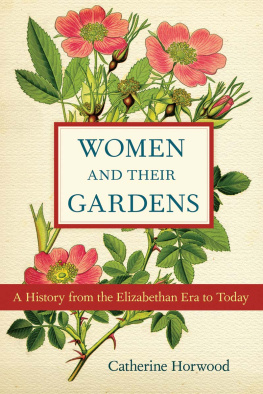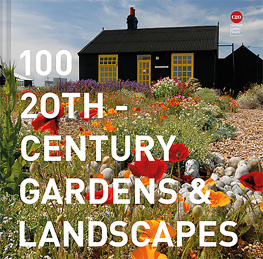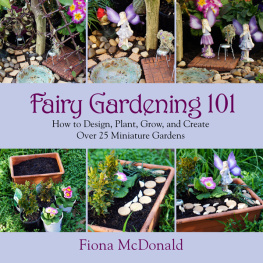To my grandchildren, Louisa, Alexander, Charlotte, Helena and James
Introduction
I love visiting other peoples gardens. It is a passion that I share with millions of others in this country who spend their weekends at the properties of the National Trust or at the myriad gardens open for charity. All of us admire the beauty of the landscapes, the quality of the planting, the serried ranks of vegetables; all of us secretly delight in discovering the odd weed or criticizing the colour schemes. In the great gardens we marvel at hidden grottoes and eye-catching temples, peaceful lakes and expansive vistas.
But as well as admiring all these things, I have a particular set of questions in mind when I tour a garden. A great deal of work is needed to create and look after a garden; I want to know how much it cost to make and to maintain. I want to know how many gardeners tend it, where the plants come from, what tools and techniques were used to create it and how they were invented. I want to be able to compare one garden with another in terms of the burden that it may have put on the family, who may have owned it for centuries. I want to know where their money came from and why they spent it on a garden. In short, I want to understand the economics of gardening and its history.
This book tries to answer these questions. It is, therefore, a new kind of garden history. Tens of thousands of books and articles have been written and published about the history of British gardens, and many more about those of other countries. But almost all of them focus on the design of gardens, or on their designers, on the trees, shrubs, flowers, fruit and vegetables that they contain, or on the temples, cascades, arbours, pergolas, statues or even the garden gnomes that adorn them. Only very rarely is the cost of making or maintaining a garden ever mentioned. The prices of plants sold by nurseries, or imported from far-flung corners of the world, or the costs of employing a gardener, are sometimes discussed, but they are almost never put into context by comparing them with the price of other items at the time or by discussing the economic conditions of each period.
Garden historians thus almost entirely ignore money. But the subject of money in the garden is oddly ignored also by another group, the historians who study the economy in the past. This is despite the fact that, as this book aims to show, spending money on gardens has been one of the greatest, and certainly most conspicuous, forms of expenditure on luxury in England since the seventeenth century or earlier; it has employed hundreds of thousands of people at a time, given rise to a substantial foreign trade and created a whole industry of nurseries, garden centres and landscaping contractors whose current turnover exceeds 11 billion each year. So I hope that this book will help persuade economic historians and economists to recognize that gardening is an important British industry in its own right and has been one for hundreds of years.
In failing to appreciate the role of money in gardening, historians of all kinds have ignored, in addition, the importance of the impact of public spending, financed from taxes and borrowing, on the creation of gardens, both by the royal family and by those who in previous centuries occupied lucrative government posts. They have not appreciated the wealth that gardening brought to designers, seedsmen and nurserymen. Advances in the technology of gardening have led to wider improvements, such as in water and steam engineering, in central heating and in the construction of metal and glass buildings. The gardens both of the great estates and of the suburbs have changed the face of England. Gardens, in short, are far more important to our economy and society than even their greatest devotees have realized.
The book begins with the garden industry as it was in 1660 and what it has become today. The restoration of Charles II to the throne may not seem an obvious starting point for the history of an industry, but Charles spent large amounts of public money on gardens and, by that means and through his own personal interest, gave a crucial boost to gardening by the wealthy and the aristocratic. One of the results was a rapid growth of plant nurseries, particularly around London, which supplied an ever-increasing range of shrubs, trees and flowering plants to garden owners and garden designers throughout England. Their creations, which are documented in a range of books and pictures, show how large were both their ambitions and their purses. Quite how large can only be demonstrated by a full evaluation of how much was spent in the past. A proper translation from old to current values, by the method explained in , shows the huge sums that have been spent over the centuries, while modern evidence for example, on our use of time shows how important gardening is to us today.
in their gardens as well as their houses, helped to fuel the Industrial Revolution.
.
All industries thrive on innovation and describes several ways in which gardening took the lead in the technological changes that swept over England during the eighteenth century and beyond. It begins with water and steam engineering, where gardens developed techniques in construction and machinery that were later adopted by canal builders and machine makers. Then came the use of glass and iron in construction, pioneered in English greenhouses, together with the central heating systems that kept plants warm even while their owners shivered. Finally there was chemistry, where highly toxic substances were employed in a vain, and often destructive, attempt to wipe out insects and diseases.
sums up the importance of gardening and its ramifications within the English economy both today and in the past.
Part of my aim in writing this book is to stimulate others to follow, to consider other aspects of the subject and to explore more historical records. There are over 1,500 gardens in Britain listed as being of historical interest and it is only possible to refer to a fraction of them. The archives in county record offices and stately homes are voluminous and I have therefore been forced to limit myself to England although the gardens of Wales, Scotland and Ireland are equally beautiful and expensive and to draw examples only from a small set of English counties. I have had to leave, for future research, the economics of plant collecting and the recent development of the nursery industry. I have not been able to consider the impact of English gardens on the rest of Europe, nor on the rest of the world, much though I would like to be able to answer the question I have often been asked: was England, or Britain, unusual? I dont think that it was, but I look forward to others investigating the topic.
List of Illustrations
Planting close to the City: the nurseries and market gardens of Southwark, south of London Bridge, in 1658. Detail from An Exact Delineation of the Cities of London and Westminster and the Suburbs Thereof, 1658, engraving by Richard Newcourt and William Faithorne / British Library, London, UK / British Library Board. All Rights Reserved / Bridgeman Images.
The kings works: Charles IIs canal in St Jamess Park, London, 1660. St Jamess Palace and Park / British Library, London, UK / British Library Board. All Rights Reserved / Bridgeman Images.
A beautiful contrivance: the canal at Hall Barn, Buckinghamshire, in the eighteenth century. View of the Great Room etc. at Hall Barn near Beconsfield in Buckinghamshire, antique copper plate from P. Russell and Owen Price, England Displayed (London: 1769).
William IIIs view of the Thames: the Privy Garden at Hampton Court, Middlesex, 1702. Engraving from Ernest Law, The History of Hampton Court Palace: Orange and Guelph Times (London: George Bell, 1891). Private Collection / Bridgeman Images.
Next page










